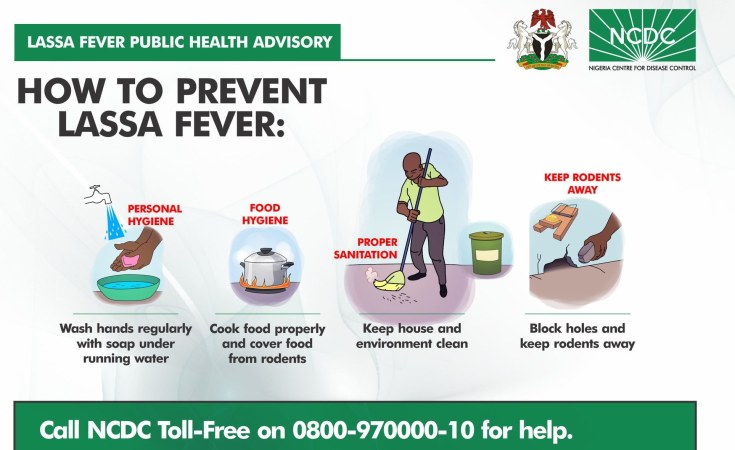According to the NCDC, 22 states have recorded at least one confirmed case across 89 Local Government Areas.
Nigeria has confirmed 40 new Lassa fever infections and five deaths in one week, spanning 27 February to 5 March.
The Nigeria Centre for Disease Control (NCDC) disclosed in its latest situation report published Tuesday on its website for week nine, noting that the number of new confirmed cases decreased from 59 in week eight to 40 cases.
The report showed that the new cases were reported from Bauchi, Ondo, Taraba, Edo, and Ebonyi states.
NCDC noted that cumulatively from week one to week nine, 109 deaths have been reported with a case fatality rate (CFR) of 16.1 per cent which is lower than the CFR for the same period in 2022 (18.6 per cent).
According to the NCDC, 22 states have recorded at least one confirmed case across 89 Local Government Areas, with 72 per cent of all confirmed cases reported from three states of Ondo, Edo, and Bauchi.
The disease control centre noted that Ondo State has so far accounted for 33 per cent of all confirmed cases, while Edo and Bauchi accounted for 29 and 10 per cent respectively.
It also maintained that the number of suspected cases increased compared to that reported for the same period in 2022, adding that one new healthcare worker was affected in the reporting week.
Lassa fever
Lassa fever is an acute viral hemorrhagic (excessive bleeding) illness that is transmitted to humans through contact with food or household items contaminated by infected rodents or contaminated persons.
Its symptoms include fever, headache, sore throat, general body weakness, cough, nausea, vomiting, diarrhoea, muscle pains, chest pain, and in severe cases, unexplainable bleeding from ears, eyes, nose, mouth, and other body openings.
The NCDC added in the report that the challenges with response to Lassa fever in the country include late presentation of cases leading to an increase in CFR, poor health-seeking behaviour due to the high cost of treatment and clinical management of the infection, poor environmental sanitation conditions, and poor awareness observed in high-burden communities.


